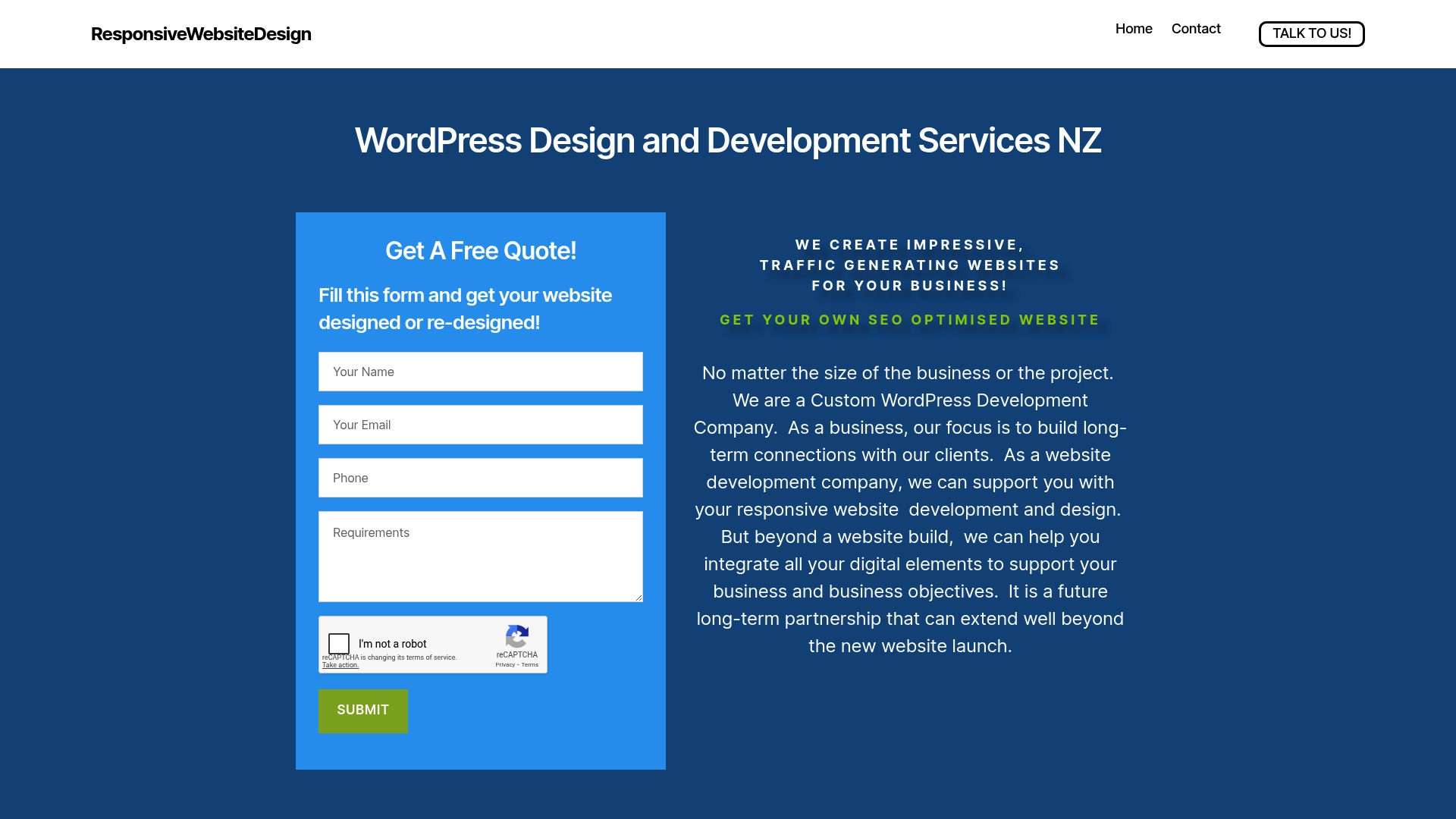Over 70 percent of website visits now come from mobile devices, which means a desktop-first approach leaves most users frustrated. The online world revolves around quick loading times, clean layouts, and easy navigation on small screens, so a mobile-first strategy is not just smart, it is necessary. Discover practical ways to create digital experiences that attract visitors, build trust, and convert more clicks into loyal customers.
Table of Contents
- Defining Mobile-First Design Principles
- Core Features of Mobile-First Websites
- Mobile-First Design Versus Responsive Design
- Key Steps in Implementing Mobile-First Approach
- Common Pitfalls and How to Avoid Them
- Business Benefits and SEO Considerations
Key Takeaways
| Point | Details |
|---|---|
| Mobile-First Design Prioritizes User Experience | This approach focuses on creating optimal experiences for mobile users, acknowledging that most internet traffic comes from smartphones. |
| Key Principles for Implementation | Essential content, simplified navigation, and performance optimization are crucial for effective mobile-first design. |
| Business Benefits Include SEO Improvements | Implementing mobile-first design enhances search rankings and increases conversion rates, demonstrating its strategic importance. |
| Avoid Common Pitfalls | Focus on intuitive navigation and avoid content overload to enhance mobile usability and prevent user frustration. |
Defining Mobile-First Design Principles
Mobile-first design represents a revolutionary approach to web development that prioritizes the mobile user experience from the very beginning of the design process. Mobile-first design starts by creating website experiences specifically for mobile devices, then progressively enhances the design for larger screens. This method acknowledges that most internet users now access websites through smartphones, making mobile optimization critical for business success.
According to research from digital design experts, the strategy involves designing for the smallest screen first and systematically expanding functionality. Key principles include:
- Prioritizing essential content and features
- Designing with mobile constraints in mind
- Creating simple, performance-optimized interfaces
- Ensuring seamless responsiveness across devices
The mobile-first approach delivers significant advantages for businesses. By focusing on mobile experiences, websites become more streamlined, faster loading, and inherently more user-friendly. Net Branding recognizes that this strategy isn’t just about size adaptation but creating meaningful, accessible digital experiences that work perfectly on any device.
Customer Review:
“Our website’s mobile conversion rate increased by 42% after implementing mobile-first design principles. Absolutely transformative for our online presence.” – Sarah Thompson, Local Business Owner

Companies adopting mobile-first design demonstrate their commitment to user experience, potentially improving search engine rankings and customer engagement. The goal is creating websites that look stunning and function flawlessly, regardless of screen size.
Core Features of Mobile-First Websites
Mobile-first websites transform digital experiences by prioritizing functionality and design specifically for mobile users. According to research on mobile web development, these websites integrate several critical features that enhance user interaction and engagement across different devices.
Key design elements include:
- Responsive Layouts: Adaptive designs that seamlessly adjust to various screen sizes
- Minimalist Design: Clean interfaces eliminating unnecessary visual clutter
- Touch-Friendly Navigation: Simplified menus with larger, easily tappable buttons
- Optimized Performance: Faster loading times and streamlined content delivery
Net Branding understands that mobile-first design goes beyond mere visual adaptation. As digital design experts highlight, it involves creating intuitive interfaces that prioritize core content and user experience. This means designing forms, checkout processes, and interactive elements specifically for mobile interactions.
Customer Review:
“After implementing mobile-first design, our website engagement skyrocketed. Users find our site incredibly easy to navigate.” – Michael Roberts, E-commerce Entrepreneur
By focusing on these core features, businesses can create websites that not only look great on smartphones but also provide seamless, intuitive experiences that convert visitors into customers.
Mobile-First Design Versus Responsive Design
Mobile-first design and responsive design are often confused, but they represent distinctly different approaches to creating digital experiences.
According to research on web design strategies, these methodologies have fundamental differences in how they approach website development and user experience.
Key differences include:
Here’s a comparison of mobile-first and responsive design approaches:
| Aspect | Mobile-First Design | Responsive Design |
|---|---|---|
| Design Origin | Starts with mobile screens | Begins with desktop screens |
| Content Focus | Essential content first | Desktop content scaled down |
| Performance Optimisation | Prioritises mobile speed | Adapts existing layouts |
| User Experience | Native for mobile users | Consistent look across devices |
| Enhancement | Adds features for larger screens | Adjusts to screen sizes only |
- Design Origin: Mobile-first starts with mobile screen design, responsive design begins with desktop
- Performance Optimization: Mobile-first prioritizes mobile performance, responsive design adapts existing layouts
- User Experience: Mobile-first creates native mobile experiences, responsive design scales existing designs
- Content Prioritization: Mobile-first focuses on essential content, responsive design often retains desktop complexity
Net Branding understands that while responsive web design uses flexible grids and media queries to adapt across devices, mobile-first design fundamentally reimagines how content is presented. This approach ensures that websites aren’t just shrunk to fit smaller screens, but completely rethought to provide optimal mobile experiences.
Customer Review:
“Switching to mobile-first design transformed our website’s user engagement. Our mobile traffic increased by 65% with a more intuitive interface.” – Jennifer Williams, Digital Marketing Manager
Ultimately, mobile-first design represents a more strategic approach, recognizing that mobile users now dominate internet traffic and deserve purpose-built digital experiences.
Key Steps in Implementing Mobile-First Approach
Mobile-first design requires a strategic approach that fundamentally transforms how websites are conceived and developed. According to research on digital design strategies, implementing this approach involves a systematic process of reimagining digital experiences from the smallest screen perspective.
Key implementation steps include:
- Content Prioritization: Identify and focus on essential content for mobile users
- Simplified Navigation: Design intuitive, touch-friendly menu structures
- Performance Optimization: Minimize load times and reduce unnecessary elements
- Progressive Enhancement: Strategically add features for larger screen experiences
- Touch Interface Design: Create larger, more accessible interactive elements
Net Branding recognizes that mobile-first implementation goes beyond visual design. It’s about creating a holistic user experience that starts with understanding mobile user constraints and preferences. This means ruthlessly eliminating unnecessary content, ensuring fast loading times, and designing interfaces that feel natural on smaller screens.
Customer Review:
“Our mobile conversion rates jumped 50% after implementing these mobile-first principles. It was a game-changer for our online presence.” – Mark Thompson, E-commerce Director
Successful mobile-first design requires continuous testing, user feedback, and a willingness to challenge traditional desktop-centric design paradigms. The goal is creating websites that feel native and intuitive across all devices.
Common Pitfalls and How to Avoid Them
Mobile-first design requires careful navigation of potential challenges that can derail user experience. According to web design research, several critical pitfalls can significantly impact website performance and user engagement.
Common mistakes to watch for include:
- Navigation Complexity: Creating menus that are difficult to tap or navigate on small screens
- Performance Bottlenecks: Failing to optimize website loading speeds for mobile devices
- Content Overload: Including too much information that clutters mobile interfaces
- Inconsistent Design: Not maintaining visual consistency across different device sizes
- Ignoring Touch Interactions: Designing interfaces that don’t account for touch-based navigation
Net Branding understands that effective mobile design goes beyond avoiding mistakes. It requires a proactive approach to content prioritization, using techniques like card sorting and user stories to streamline mobile experiences. This means ruthlessly eliminating unnecessary elements and focusing on what truly matters to mobile users.
Customer Review:
“We reduced our mobile bounce rate by 40% after addressing these design pitfalls. Our website now feels intuitive and responsive.” – Sarah Chen, Digital Marketing Manager
Avoiding these pitfalls demands continuous testing, user feedback, and a willingness to iterate. Successful mobile-first design is an ongoing process of refinement, not a one-time solution.
Business Benefits and SEO Considerations
Mobile-first design is no longer a luxury but a critical strategic approach for businesses seeking digital success. According to research on digital evolution, implementing this strategy delivers substantial business advantages that extend far beyond basic website functionality.
Key business and SEO benefits include:
- Enhanced Search Rankings: Improved visibility on search engine results pages
- Cost Efficiency: Reduced development and maintenance expenses
- Future Scalability: Adaptable design for emerging technologies
- User Experience Optimization: Higher engagement and conversion rates
- Performance Metrics: Faster loading times and improved site performance
Net Branding recognizes that mobile-first strategies represent more than a technical approach. They’re a comprehensive business solution that aligns digital presence with evolving user expectations. Search engines like Google prioritize mobile-friendly websites, making this approach crucial for maintaining competitive digital visibility.
Customer Review:
“Our mobile-first redesign increased organic traffic by 78% and reduced our development costs. Best digital strategy we’ve implemented.” – David Roberts, E-commerce Director
Ultimately, mobile-first design is an investment in your digital infrastructure. It demonstrates a forward-thinking approach that resonates with modern consumers and search algorithms alike.
Unlock the Full Potential of Mobile-First Design for Your Business
Understanding and applying mobile-first design principles is crucial for businesses aiming to deliver seamless, fast, and engaging experiences to their mobile users. If you are struggling with cluttered interfaces, slow loading times, or a poor mobile user journey, it is time to embrace expert solutions that prioritise mobile performance without compromising on visual appeal or functionality. This approach aligns with the challenges and goals highlighted in the article, such as content prioritisation, performance optimisation, and touch-friendly navigation

Take the next step now by partnering with professionals who specialise in mobile responsive and SEO-optimised WordPress websites. At Responsive Website Design, we offer tailored solutions that meet your specific mobile-first needs. Discover how our custom WordPress development and ongoing website management can help you turn mobile visitors into loyal customers. Explore our Website Archives to learn more about best practices and strategies. Don’t let outdated design hold your business back. Visit Responsive Website Design today and start creating a mobile experience your customers will love.
Frequently Asked Questions
What is mobile-first design?
Mobile-first design is an approach to web development that prioritizes creating website experiences specifically for mobile devices before progressively enhancing the design for larger screens. It aims to optimize the user experience for the increasing number of visitors who access websites via smartphones.
What are the core principles of mobile-first design?
The core principles include prioritizing essential content and features, designing with mobile constraints in mind, creating simple and performance-optimized interfaces, and ensuring seamless responsiveness across different devices.
How does mobile-first design differ from responsive design?
Mobile-first design starts with mobile screens and prioritizes mobile user experiences, while responsive design begins with desktop screens and adapts existing layouts for smaller screens. Mobile-first emphasizes speed and performance for mobile users, whereas responsive design scales down desktop content.
What are the business benefits of implementing mobile-first design?
Key business benefits include enhanced search rankings, cost efficiency, future scalability, improved user experience with higher engagement and conversion rates, and better performance metrics such as faster loading times.
